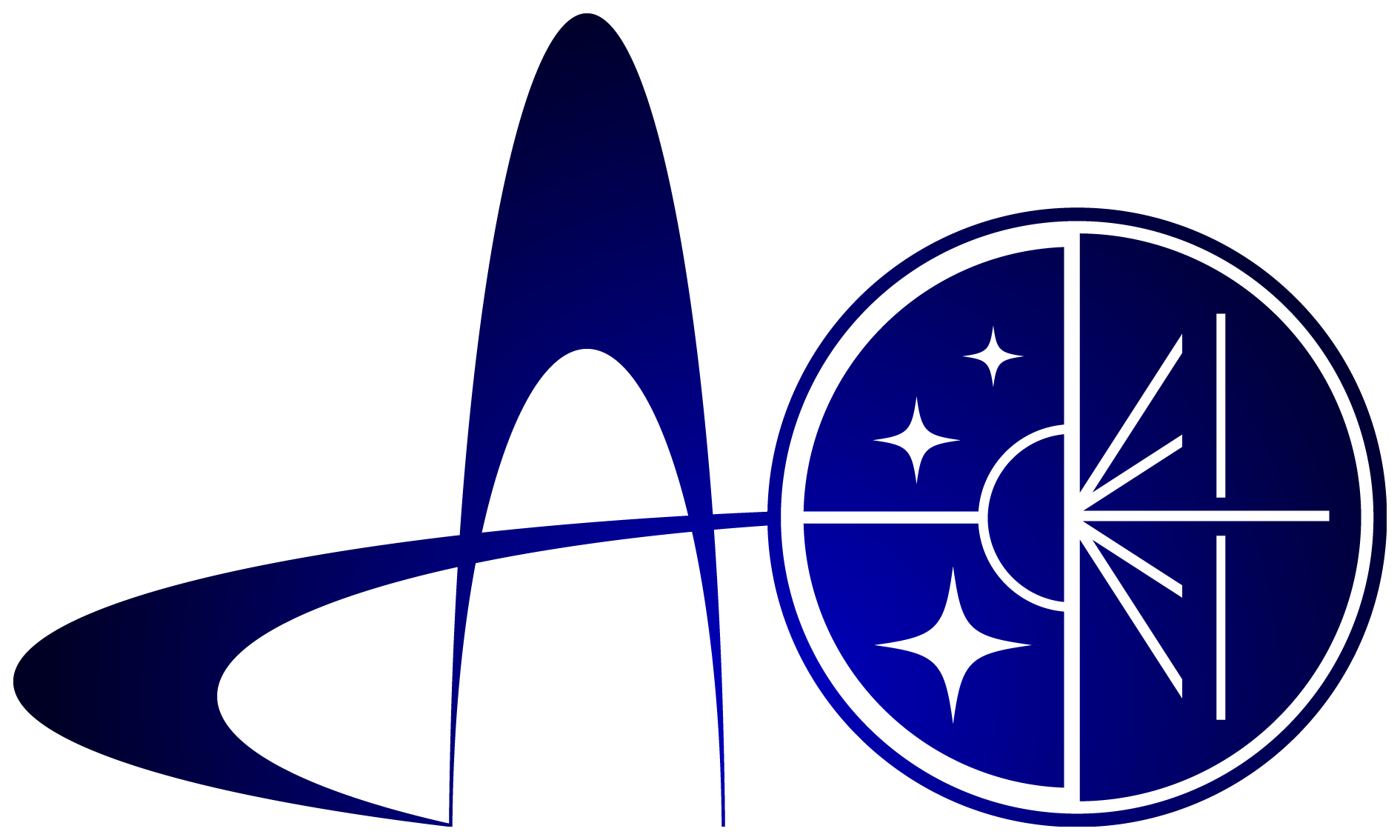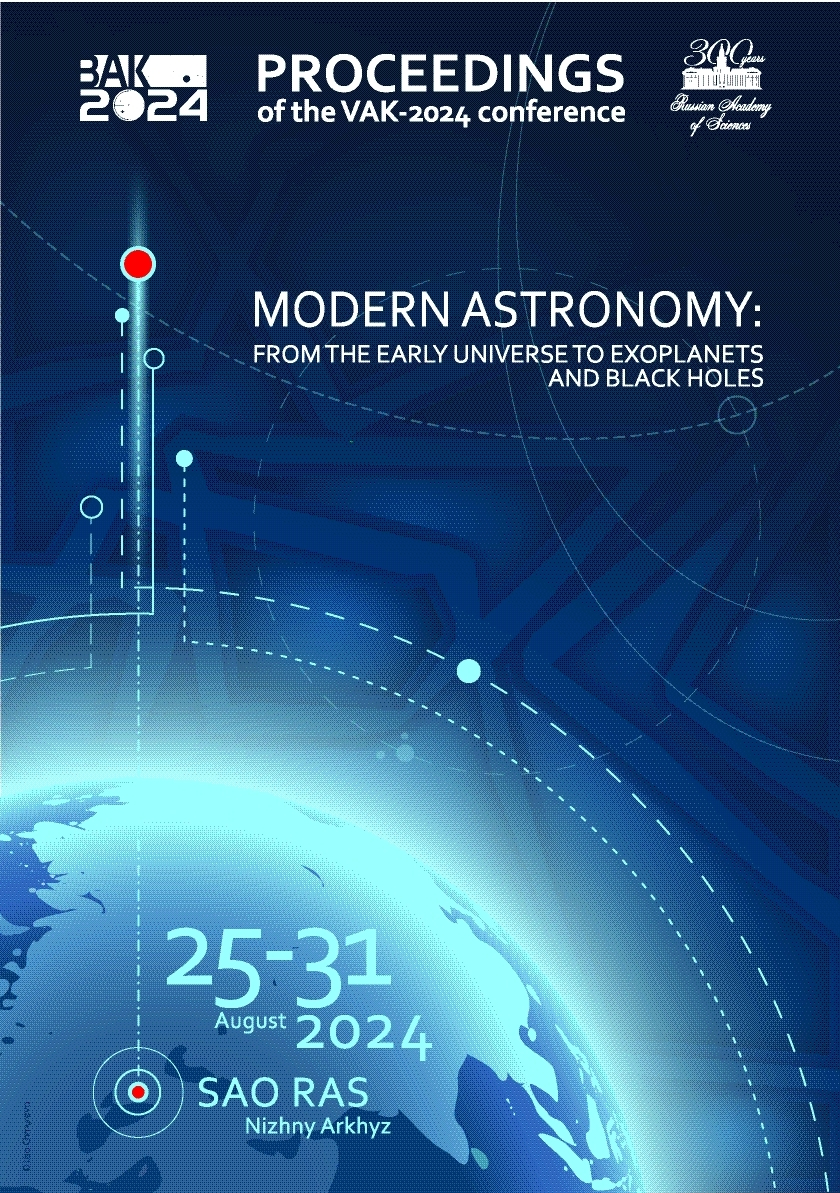National Astronomical Research Institute of Thailand
UDC 524.3-126
UDC 524.3-13
UDC 524.3-14
UDC 524.3-355
UDC 52
UDC 53
UDC 520
UDC 521
UDC 523
UDC 524
UDC 52-1
UDC 52-6
CSCSTI 41.00
CSCSTI 29.35
CSCSTI 29.31
CSCSTI 29.33
CSCSTI 29.27
CSCSTI 29.05
Russian Classification of Professions by Education 03.06.01
Russian Classification of Professions by Education 03.05.01
Russian Classification of Professions by Education 03.04.03
Russian Library and Bibliographic Classification 2
Russian Library and Bibliographic Classification 223
Russian Trade and Bibliographic Classification 614
Russian Trade and Bibliographic Classification 6135
BISAC SCI004000 Astronomy
BISAC SCI005000 Physics / Astrophysics
We studied the magnetic field of chemically peculiar stars in the young Orion OB1 association and in other five older clusters. We have found new evidence of the validity of the relic origin of the magnetic field. In the Orion OB1 association, the magnetic field values and the occurrence frequency of magnetic stars are systematically higher than in older groups. There is no magnetic field generation during the life of a star on the main sequence. The observations were carried out using the 6-m telescope of the Special Astrophysical Observatory of the Russian Academy of Sciences. We studied the magnetic field of about 80 stars. More than 1000 spectra were obtained with the circular polarization analyzer on the BTA Main Stellar Spectrograph.
stars: magnetic field, chemically peculiar
1. Bagnulo S., Landstreet J.D., Mason E., et al., 2006, Astronomy & Astrophysics, 450, 2, p. 777
2. Blaauw A., 1964, Annual Review of Astronomy and Astrophysics, 2, p. 213
3. Brown A.G.A., de Geus E.J., de Zeeuw P.T., 1994, Astronomy & Astrophysics, 289, p. 101
4. Chountonov G.A., 2016, Astrophysical Bulletin, 71, 4, p. 489
5. Hümmerich S., Mikulášek Z., Paunzen E., et al., 2018, Astronomy & Astrophysics, 619, id. A98
6. Mestel L., 2003, ASP Conf. Ser., 305, p. 3
7. Moss D., 1989, Monthly Notices of the Royal Astronomical Society, 236, p. 629
8. Panchuk V.E., Chuntonov G.A., Naidenov I.D., 2014, Astrophysical Bulletin, 69, 3, p. 339
9. Romanyuk I.I., Semenko E.A., Yakunin I.A., et al., 2013, Astrophysical Bulletin, 68, 3, p. 300
10. Romanyuk I.I., Semenko E.A., Moiseeva A.V., et al., 2019, Astrophysical Bulletin, 74, 1, p. 55
11. Romanyuk I.I., Semenko E.A., Moiseeva A.V., et al., 2021a, Astrophysical Bulletin, 76, 1, p. 39
12. Romanyuk I.I., Semenko E.A., Moiseeva A.V., et al., 2021b, Astrophysical Bulletin, 76, 2, p. 163
13. Romanyuk I.I., Moiseeva A.V., Yakunin I.A., et al., 2023a, Astrophysical Bulletin, 78, 2, p. 152
14. Romanyuk I.I., Moiseeva A.V., Yakunin I.A., et al., 2023b, Astrophysical Bulletin, 78, 1, p. 36
15. Romanyuk I.I., Yakunin I.A., Moiseeva A.V., et al. 2024, Astrophysical Bulletin, 79, 1, p. 95
16. Schneider F.R.N., Ohlmann S.T., Podsiadlowski P., et al. 2019, Nature, 574, 7777, p. 211
17. Semenko E., Romanyuk I., Yakunin I., et al., 2022, Monthly Notices of the Royal Astronomical Society, 515, 1, p. 998








